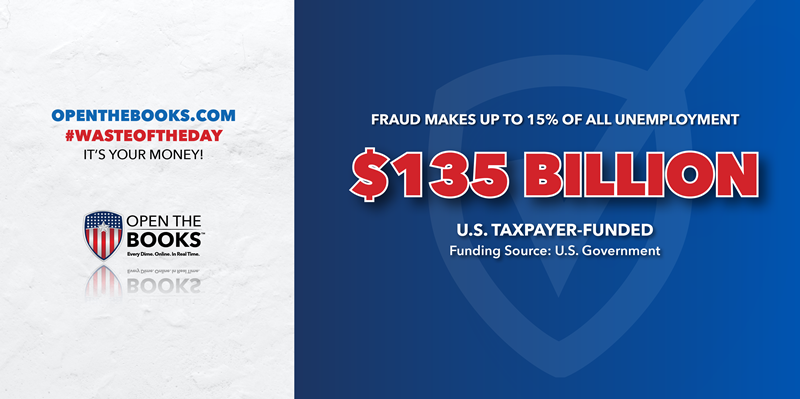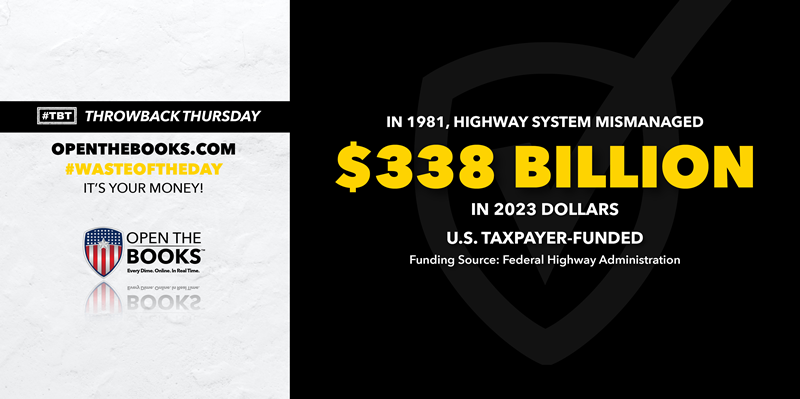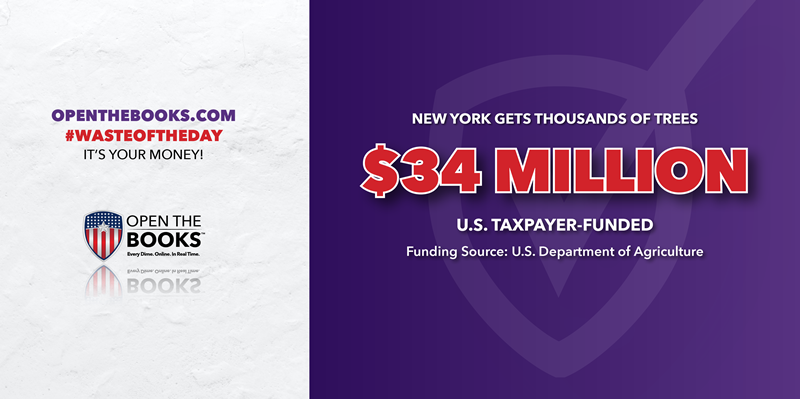
U.S. Gave Ukraine $25 Billion In Aid For Farmers, Small Businesses
October 9, 2023
Lawmakers have continually insisted the $70 billion the U.S. has sent to Ukraine since Russia’s invasion in 2022 has been critical military and humanitarian aid, but a new investigation by 60 Minutes has found the U.S. has spent $25 billion in non-military aid, buying Ukrainians much more than guns.
The investigative TV show found a litany of unusual expenditures that are beyond the scope of standard military and humanitarian aid. For instance, the U.S. funded the purchase of seeds and fertilizer for Ukrainian farmers. It has also been paying for the salaries of all 57,000 of Ukraine’s first responders. Divers clearing rivers and lakes of unexploded ammunition are also on the U.S. payroll, 60 Minutes reported.
The U.S. is also bankrolling a stimulus program for Ukraine’s small businesses. 60 Minutes interviewed the owner of a knitwear company in Kyiv and found the U.S. has helped her find new customers overseas, as well as meet her payrolls of over 70 families.
The U.S. has been the primary financier of the Ukrainian war effort, contributing $43 billion of military aid to Ukraine, while the rest of the European contributions combined total about $30 billion.
While Ukrainian authorities claim they can vouch for the integrity of these payments now, 60 Minutes noted a Department of Defense Inspector General’s report that found in the early days of the war, the U.S. government was unable to monitor weapons transfers, some of which were stolen by criminals.
While there are plenty of reasonable arguments on both sides of the debate about how much aid the U.S. should send to Ukraine, our leaders should be honest with us about where the money is actually going.
Nevada Sitting on $91 Million Meant to Help Homeowners
October 10, 2023

While homeowners in Nevada receive foreclosure notices and risk losing their homes, the state has only used a small portion of the $120 million the U.S. Treasury Department allocated to help people avoid foreclosure.
Nevada Affordable Housing Assistance Corporation, a small nonprofit, gets the federal funds and is supposed to pay banks directly to bring mortgages current, ProPublica reported.
But its slow pace at enrolling people in need and paying those delinquent mortgages ranks Nevada 43rd among the states for getting money to homeowners.
At the end of the first quarter, Treasury reported that the nonprofit had distributed $17 million — less than 14% of the funds — and as of Aug. 15, according to NAHAC’s data, Nevada had distributed an additional $12 million.
A federal audit found that previous leadership at Nevada Affordable Housing Assistance Corporation “had squandered federal aid to homeowners caught up in the 2008 foreclosure crisis,” ProPublica reported. It’s unclear, other than new leadership, why the same organization would be entrusted to run a $120 million program.
The program continues to have issues, including making timely payments to banks, while homeowners continue to receive foreclosure notices on loans they thought were being paid.
One woman who got a few partial mortgage payments from the program, Shirley Geraci, said when she told the nonprofit that she was getting foreclosure notices, the organization was unable to tell her how much it had paid her bank and why the payment hadn’t been applied to her account, and it wouldn’t provide anything in writing.
Geraci and her daughter were unsure whether they’d even try to continue getting more aid.
The states are “flying by the seat of their pants” to run the program and “people are suffering,” she said.
Pandemic Unemployment Insurance Fraud Could Total $135 Billion
October 11, 2023

A new study from the Government Accountability Office estimated that the amount of fraud from pandemic-era unemployment insurance programs is likely between $100 billion and $135 billion, or about 11-15% of total unemployment insurance benefits distributed.
GAO found rampant waste, abuse, and fraud in the COVID-19 era program, which was meant to help those laid off due to the pandemic. In its investigations of state records it found $55.8 billion in overpayments, $5.3 billion of which were fraudulent.
Using statistical modeling, GAO used this data sample to estimate that the total amount of fraud in pandemic unemployment insurance programs was between $100 and $135 billion. The Department of Labor claimed this is an overestimate, but GAO defended its methodology.
Not only were taxpayers defrauded of billions, but the Department of Labor anticipated this and awarded $1.4 billion to states for investigating fraud and recovering fraudulent funds. In hindsight, that massive funding wasn’t very effective. So far, only $1.2 billion has been recovered, less than what it cost to fund the investigations.
Unfortunately, the Department of Labor doesn’t seem too eager to learn from its mistakes. Since 2018, GAO has made 26 recommendations to the Department of Labor to prevent fraud and overpayments, but so far, 16 of those have not yet been fully implemented.
The hundreds of billions that were wasted and stolen between various pandemic relief programs like the Paycheck Protection Program, the Economic Injury Disaster Loan Program, and unemployment insurance add up to a significant part of the U.S. national debt, and will cost taxpayers for years to come as we finance this debt at higher interest rates.
Throwback Thursday: Highway Administration Had $100 Billion in Cost Overruns
October 12, 2023

Throwback Thursday!
In 1981, the Federal Highway Administration had rampant mismanagement and delays that caused costs to soar 267% over budget, creating $100 billion in cost overruns — worth $338 billion in 2023 dollars.
Sen. William Proxmire, a Democrat from Wisconsin, awarded the FHA his Golden Fleece Award for this gross negligence in administering its projects.
According to Proxmire, these massive cost overruns on the Interstate Highways System were the highest of any civilian projects at the time. The program was anticipated to cost only $37.6 billion at its inception in 1958, but by 1981, the program’s cost skyrocketed to $137.9 billion, a $100.3 billion increase.
The growth alone equaled the budgets of the entire Department of Defense in 1977 — or the budgets of the Departments of Agriculture, Education, Energy, Housing and Urban Development, Interior, Justice, State, and Transportation, combined, in 1982.
Inflation only accounted for about half of the growth in costs. The remaining portion of the increase, $44.4 billion, was due to mismanagement, delays and confusion in construction.
There are countless examples of specific projects that drove such absurd cost overruns, like a stretch of highway in New York City, called the “Westway,” which cost $1 billion per mile to construct a four-mile stretch. The Glenwood Canyon Project in Colorado also saw rampant cost overruns, with estimated costs doubling from $300 million to $600 million over its eight-year construction period.
Rampant cost overruns like these on old programs crowds out new programs and investments, severely limiting the ability of government to tailor its spending to the new needs of its constituents.
Sens. Schumer, Gillibrand Secured $34 Million to Plant Trees in NY
October 13, 2023

While New York City struggles with a housing and migrant crisis, Sen. Kirsten Gillibrand (D-NY) secured $20 million in federal funding for New York City to plant trees, The New York Post reported.
Senate Majority Leader Chuck Schumer (D-NY) also secured another $14 million to plant trees in other cities across New York State.
The funding came from the Department of Agriculture’s Forest Service’s Urban and Community Forestry program, which received $1.5 billion in funds from the Inflation Reduction Act in 2022.
The program is part of the Biden Administration’s Justice40 initiative to promote environmental justice, and is meant to provide tree canopies and environmental justice to disadvantaged communities, according to its website.
In one press release, Schumer announced $11 million in funding for Syracuse, Auburn, and Central New York, while in another, he announced $3 million for Rochester. The press releases state the funding will be used to, “plant thousands of new trees and expand youth and job training programs helping make the community greener.”
Equity was a major focus of these investments, with Schumer saying in the press release that these locations represented some of New York’s “most underserved neighborhoods,” and with Syracuse Mayor Ben Walsh stating, “With these funds, Syracuse will be better able carry out our goal to grow the canopy more equitably…”
Similarly, NYC Parks Commissioner Sue Donoghue said, “Thanks to this investment, our city will soon have more trees, expanded and more resilient forests, and new green jobs, helping us to further our commitment to expanding and preserving our natural environment.”
While there’s nothing wrong with planting trees, it’s difficult to imagine how this task requires $34 million. The total number of trees to be planted is unclear, though Auburn will plant 1,200, Central New York is planning for 10,000, and Rochester is anticipating 6,000.
The scale of the program is also arbitrary, and these communities could no doubt build their canopies and increase tree coverage with half of the number of trees and half the funding.
Programs like these, which borrow millions of dollars to spend on environmental justice programs, are partially why our country has dug itself into $33 trillion of debt, and their scale ought to be carefully considered.
The #WasteOfTheDay is presented by the forensic auditors at OpenTheBooks.com.